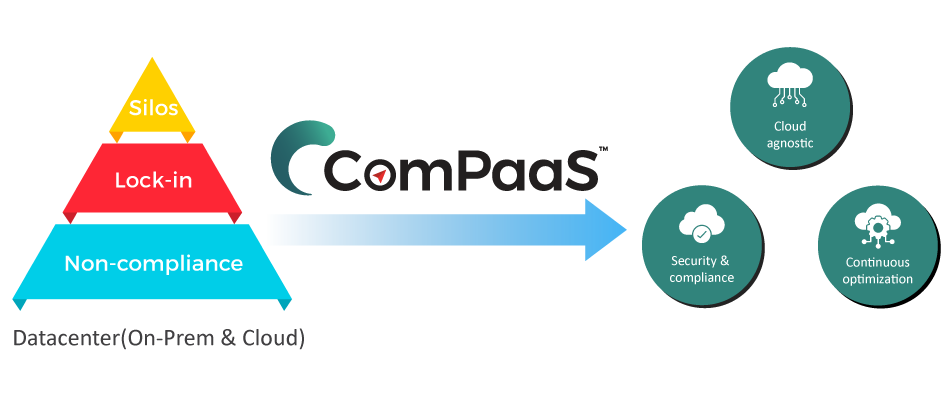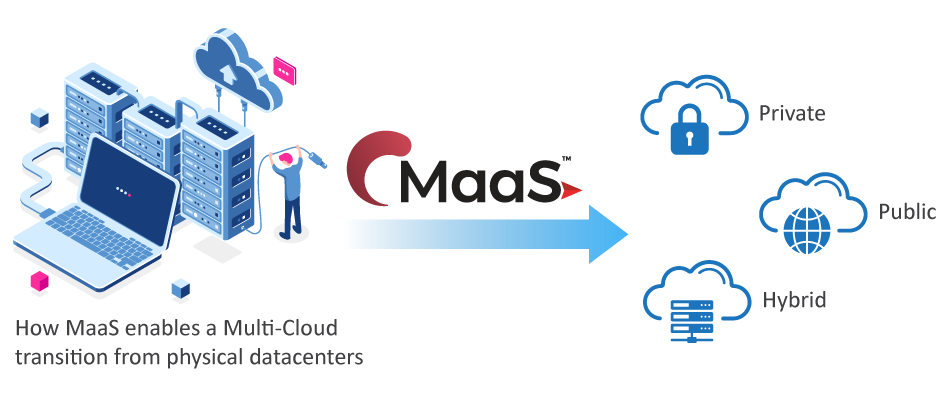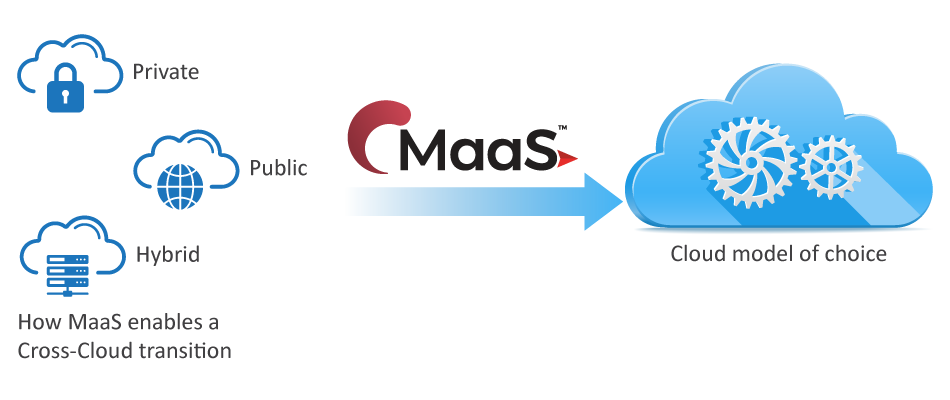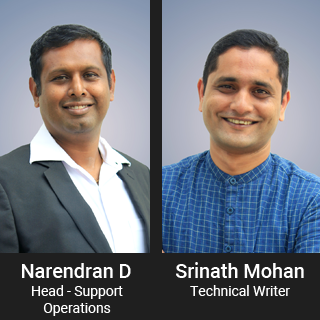The transition to a Cloud environment is not aspirational anymore but a necessity. We have seen partners leverage Corent MaaS™ to strategize their journey to choose the best-in-breed services for workloads in a multi-Cloud environment. In conjunction with Corent ComPaaS™, partners have not only saved on upfront costs but also have managed to attain optimal performance within budget.
A multi-Cloud environment, despite all its benefits, poses some operational constraints, addressing which will require a shift in strategy and paradigm. The key lies in breaking silos to enhance interoperability while bolstering security and agility.
Issues with the existing model
Companies yearn to break the constraints imposed by vendors and seek to choose between offerings of different CSPs while circumventing the operational limitations and egress costs. To borrow the cliché, companies do not want to put all their eggs in one basket!
Granted that scalability, cost-economics, performance, and high availability are the top draw for companies seeking to switch to a multi-Cloud environment, but does it allow companies to:
- Tackle the issue of vendor lock-in while enhancing productivity?
- Comply with tedious security and geographical domain compliance norms?
- Offer the same/higher level of services without downtime?
- Switch between CSPs offering competitive services at will?
- Provide services with minimal/zero latency?
Cross-Cloud migration circumvents the limitations imposed by proprietary solutions and enables companies to choose the best services that suit their immediate needs.
What is a Cross-Cloud Migration?
Cross-Cloud migration happens when customers seamlessly switch between service providers on Cloud. As a Cloud agnostic solution, Cross-Cloud weighs the benefits of switching platforms/CSPs against the pitfalls of egress and enables timely transitions aimed at boosting productivity and scalability. It unifies multiple Clouds solutions under the single banner of functionality to enhance optimization, security, management, and networks.
Issues in a multi-Cloud environment
While multi-Cloud allows partners to choose the best-in-class service providers at competitive prices for their customers, it also consists of problems:
Silos
In a multi-Cloud environment, workloads often get siloed as the optimization and productivity solutions offered by CSPs work only on their platforms. This lack of interoperability deals a crushing blow to efficiency, as siloed workloads militate against the basic tenets of CI/CD pipelines, DevOps methodology, and cross-functional interactions.
Vendor lock-in
Vendor lock-in is a real issue on the Cloud as it inhibits switching between CSPs by making inter-Cloud migration prohibitively costly, adversely affecting the quality of service and productivity of the customer. A locked-in customer is constrained to stick with a vendor even if the latter fails to uphold the terms of SLA. Moreover, in case the vendor changes the product line up or hikes the fees, a locked-in customer can do little to address the situation.
Compliance
Compliance issues are born the moment you shift your datacenter to a third-party SPs platform. There are several issues, with the prominent being:
- Shared data security responsibility
- Regulation mesh and compliance based on geographies and industries
- Improper access controls
How does ComPaaS™ let you know when to switch?
One way to do away with the silos while leveraging the best-in-breed services of CSPs is through ComPaaS™ . By delivering an application-aware, Cloud-agnostic management and continuous optimization experience for MSPs and corporate IT departments, ComPaaS™ not only peels off the layers of complexities but also offers partners insight into the best workload-CSP combination.

ComPaaS™ leverages AI to automate the grouping of applications based on best industry and compliance practices. Besides, ComPaaS™ allows users to capture all the application details in blueprints. Users can visualize, clone, and manage blueprints to discover the dependencies among workloads. The single-pane view and control options cut the clutter and offer you actionable advisories at will.
As a Cloud agnostic solution, it tackles vendor lock-in by offering insightful resource consumption and utilization data to make informed decisions. Also, by grouping applications and monitoring them in real-time, it addresses the issue of latency as your data, workloads, and applications are always available with zero downtime.
ComPaaS™ enables you to assess the utilization and performance patterns through its detailed, incisive, and insightful reports. These reports hold the key to making informed decisions regarding which CSP offers best-in-class services that resonate with the requirements of your workload. Once your assessment of the situation is over, it’s time to make the switch by tapping into Corent’s resourceful and intelligent one-stop-shop for all migration solutions: MaaS™
How to migrate between CSPs?
Cross-Cloud solutions hold the key to high availability, low latency, and increased compliance as partners can switch between CSPs by breaking the barrier of prohibitive costs. This way, developers are freed from the crippling constraints of tweaking software/applications to suit the platform, while operators can deploy applications without having to undergo a protracted waiting period for refactoring.

MaaS™ enables Cloud-to-Cloud migration in the same way as it does for on-premises to Cloud. It uses advanced Cloud migration methodologies to provide you with intelligent options for migrating applications/VMs within the Cloud. It tailors solutions based on the business needs and the complexity of the application environment. These robust migration methodologies allow you to migrate multiple servers in parallel with clear, actionable reporting in case of any issues.
Why choose cross-Cloud?

The ultimate objective of any technology is to ease the complexity and enhance productivity. Cross-Cloud solutions add a layer of operational brilliance to an already feature-rich, multi-Cloud environment. By making interoperability a key functionality, Cross-Cloud eats away at latency and compliance concerns.
Corent’s MaaS™ and ComPaaS™ weld intelligent migration and continuous optimization solutions to offer you a stress-free, streamlined application management platform that not only enhances productivity but also bolsters security for a smooth Cloud transition and experience.
Reach a Product Expert

Edited By Shafi Syed. August 29, 2022

